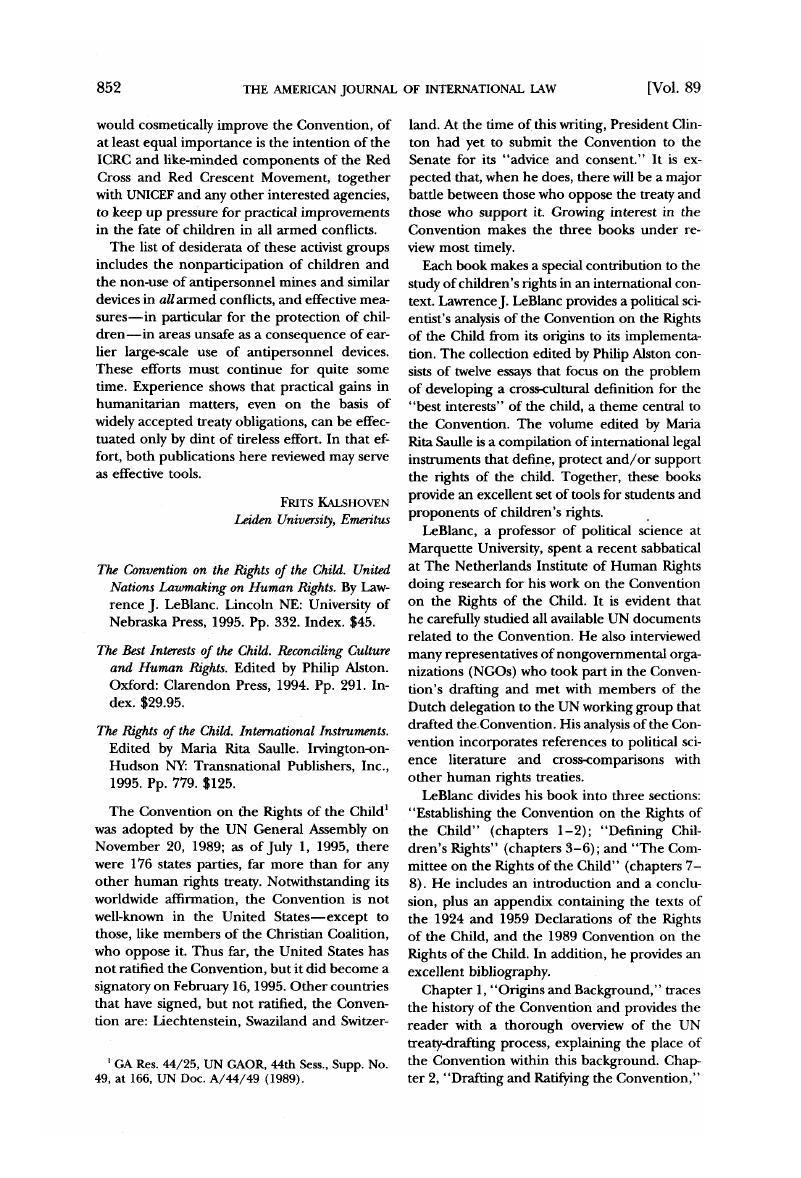No CrossRef data available.
Published online by Cambridge University Press: 27 February 2017

1 GA Res. 44/25, UN GAOR, 44th Sess., Supp. No. 49, at 166, UN Doc. A/44/49 (1989).
2 The first reading, in which the basic text of the Convention was finalized, took place from 1979 to 1988. The second reading, during which the text was revised and no new articles could be proposed, was held in 1988, but its document numbers reflect the fact that it was held under the auspices of the 1989 Commission on Human Rights. Not only were there more governments during the second reading, but also governments that originally had sent a single representative from a Ministry of Health or Education sent more than one representative—usually including someone from the Ministry of Justice.
3 See Committee on the Rights of the Child, General Guidelines Regarding the Form and Content of Initial Reports to be Submitted by States Parties under Article 44, Paragraph (a) of the Convention, UN Doc. CRC/C.5 (1991), UN Doc. A/47/41, Ann. III (1992) [hereinafter Guidelines on Reporting].
4 See UN Doc. E/CN.4/L. 1543, paras. 6, 10, 18 (1980). The word “abortion” does not appear anywhere else in the travaux préparatoires.
5 The 1980 proposed language, expanded to incorporate references to the 1959 Declaration, was ultimately adopted during the second reading as part of preambular paragraph 9, with a contentious added footnote.
6 Alston is also Chairman of the Committee on Economic, Social and Cultural Rights, the monitoring body for the corresponding Covenant.
7 The Convention on the Rights of the Child is the only UN human rights treaty that does not use a single-gender pronoun. One finds “his or her,” and “him or her” and/or the gender-neutral word “child.”
8 Supra note 3.